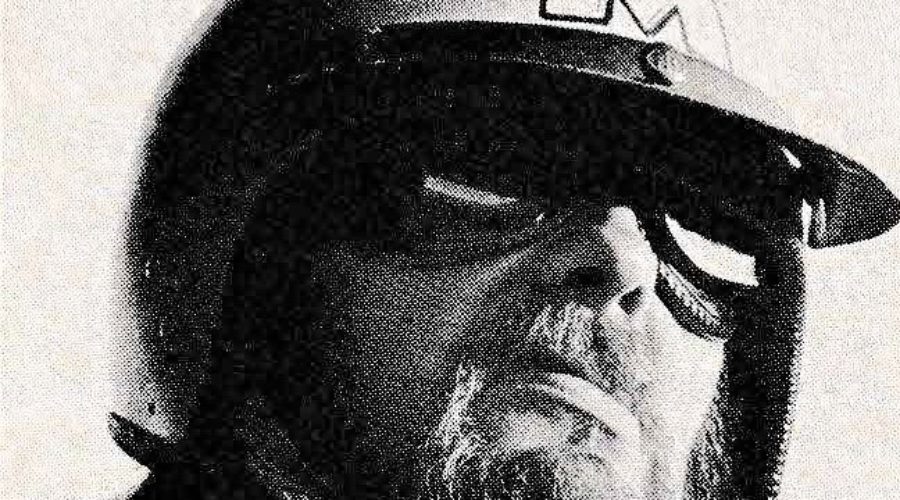The Socket File: Speed is Good
A recent survey in the United Kingdom has totally altered every belief I held on motorbicycles and speed. For many years, more than I care to remember, I have believed that speed was the biggest killer on the roads — despite some sharp wits saying that it’s only the sudden stop that kills, not the speed itself.
The highly respected survey which changed my mind showed graphically that most accidents occur between 40 and 60 km/h. Something like 75 percent of all road accidents involving injury or fatalities occur when the vehicles are travelling at the most common speeds used by most road travellers.
At the other end of this graph were two amazingly safe areas. Speeds below 15 km/h and in excess of 185 km/h both showed amazingly small numbers of accidents. Less than five percent of accidents occurred at below 15km/h with accidents over 185 km/h responsible for less than one percent of the total.
The lesson we can learn from these amazing figures is simple. It is extremely dangerous to ride around at speeds between 40 and 60 km/h. If you do, there’s a 75 percent chance you’ll have an accident. Most of you who’ve been involved in traffic accidents will agree that they happened between these highly dangerous speeds.
As a person with considerable respect in the rarified air of government, I have been discussing these figures with our Federal Friends. The Transport Minister, the Rt. Hon. Shyttin de Carbi, agreed that accident figures in Australia showed the same tendency towards injury and fatalities in the 40-60 km/h range. The Minister for Health and Welfare Services, the Rt. Hon. Justin Agony told me that motorbicycle injuries suffered between these speeds were by far the greatest in number. More people had been carried off to hospital after an accident at 60-65 km/h than any other speed. My very good friend, Sir Mark Time, Minister of Certain Things, also told me that the majority of speeding offences committed occurred between 60 and 80 km/h, whereas the number of tickets issued for offences under 15 km/h and in excess of 185 km/h were negligible.
As soon as this information had time to sink in, I started lobbying on behalf of motorbicycle riders throughout this wonderful country. As I saw it, the answer was staring me in the face and as a person with some sway in the halls of power I have put duty before bigotry and, without thought of personal gain, started lobbying for a change in the speed laws of Australia.
Don’t be surprised if, in the next few months, you hear of a really brilliant plan, announced by a fledgling under-secretary to Sir Mark Time, that will cut the motorbicycle riders’ road death toll by 75 percent. You’ll have read about it here, and I’m the man responsible. As I said, the answer was staring me in the face and it is this simple: If the majority of accidents occur between 40 and 60 km/h, make these speeds illegal. If the safest speeds for travelling are below 15 km/h and above 185 km/h, make these speeds mandatory. My plan is to reduce city speeds to 15 km/h or below, and all areas which were posted at 80 km/h or more should be restricted to a minimum of 185 km/h.

However brilliantly simple this plan may be, I have only one serious misgiving. This was explained to me by the Statistician for the Ministry of Kerosene Refrigerators and Roads, Miss Lydia Casserole (a young new Australian). She explained that at 15 km/h a motorbicycle would take 4.8 seconds to cross a 20 metre intersection while at 185 km/h this reduces to a mere 0.4 seconds. As we all know, the most dangerous part of any road is an intersection – it is the place where most accidents happen – so the amount of time spent in an intersection is dangerous. The rider of a 15 km/h motorbicycle would be exposing himself to danger for 4.4 seconds longer than a rider at 185 km/h. For this reason, there may be some real advantages in making the 185 km/h speed limit applicable everywhere. In the example quoted above, the slow rider is 12 times more likely to have an accident than the faster rider.
Should these laws come into force we will have other excellent benefits. Apart from riding at the safest of all possible speeds, some improved design features will have to be incorporated into motorbicycles. Brakes will have to improve and the performance factor of almost every machine will need to be better if the machine is to remain legal. It would no longer be necessary to equip police with large and expensive (for the taxpayer) pursuit vehicles because people would be booked for travelling too slowly, not too fast. Bicycles would be satisfactory for Highway Patrol police. Skills needn’t be as great (it costs the taxpayer a fortune to train a policeman) and men of lower intellect and physical stature could be employed to catch slow (dangerous) vehicles.
Finally, the greatest saving would be in vehicle insurance and medical services. I’m not a fool, I do understand that the few accidents which will occur at above 185 km/h will be pretty horrifying. However, because the motorbicycles will be written off, the high cost of repairs can be eliminated. Also, expensive ambulances with life support systems and drugs aboard will hardly be necessary.
Before you take up a pen and write to thank me for interceding on your behalf in the corridors of power, please don’t. What I have done to improve your lot was done because I just want to help. The new laws will save lives and money.
This you can believe.
B. St-F. Whitworth-Socket, Esq.
By Brian Woodward. Two Wheels, January 1979



